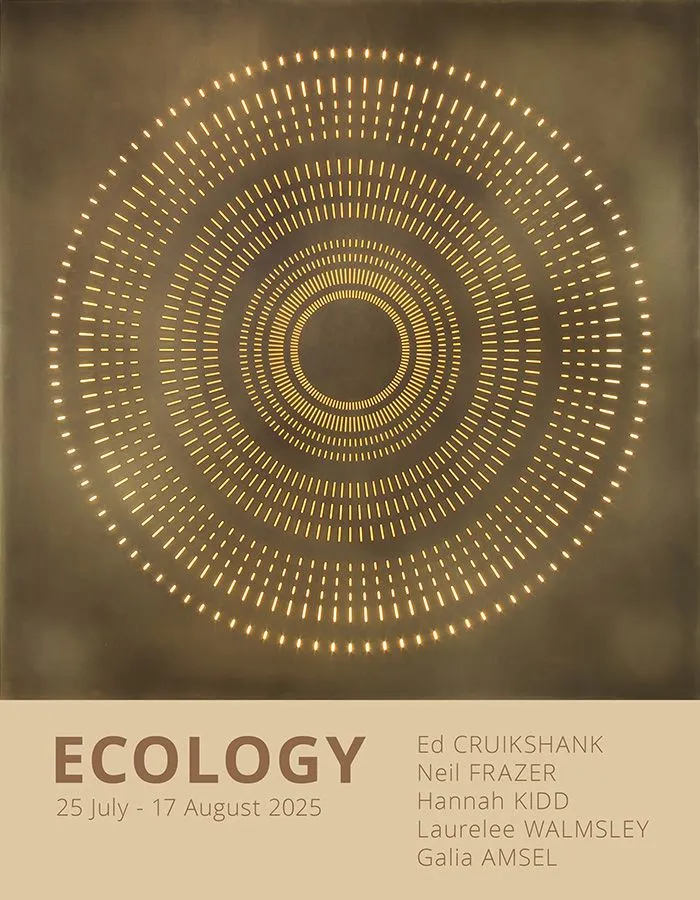Ecology (2025)
Closes
Aug 17, 2025Posted on
Jul 16, 2025Event type:
Art , Exhibition , Public Art , Public Program ,Price:
FreeVenue:
Milford GallerisAddress:
58 Gorge Road, QueenstownRegion:
National , Online , Otago , Southland ,
This exhibition gathers five artists whose works address threads of connection, relationship, and belonging in the world. Ecology, at its root, means the study of home; yet in spirit, it speaks to the delicate ties between living beings and the environments they inhabit.
Galia Amsel channels the landscape into elegantly curved forms that both freeze and flow with environmental energies. Meticulously cast and cold-worked forms, often inspired by clouds that drive over the Waitakere ranges, encapsulate ephemeral moments, reflecting cycles found in nature such as tides or seasonal shifts.
The clear yet interlocking forms of Laurelee Walmsley’s paintings mirror the ecological relationships found in nature, where every element plays a role in sustaining the whole. For her, the act of painting is more than aesthetic, it is a practice of connection. By contrast the landscapes of Neil Frazer explore palpable physicality. Using rags, brushes and his own hands, gestures become one with water, rock and tempestuous winds. This visceral approach echoes the interconnectedness of systems, interplay between forces and the impossibility of standing apart from the environment we inhabit.
Resembling modern-day Rosetta Stones, the deceptive restraint of Ed Cruikshank’s wood and metal sculpture elicits curiosity, defying apparent meaning but suggesting so much. That dichotomy is both revealing and intriguing; we are challenged to cross a threshold, from passive observation to active exploration.
Seabirds cling precipitously in these interrelated works from Hannah Kidd. Her sculptures bring us up close to the ecological front line, prompting reflection on issues such as sustainability, habitat loss, and consumer waste.